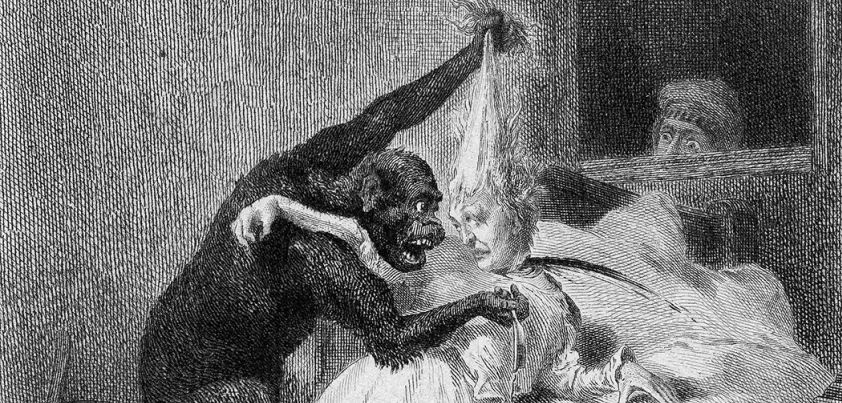 Written in 1841, this rather unlikely story by Edgar Allan Poe is considered one of the world’s first modern detective stories. In a seemingly insoluble locked-room mystery, the wrong man is arrested for the violent murder of two women. In an effort to find the truth, Poe’s amateur detective Dupin demonstrates the importance of “mental analysis” in problem solving and, in the process, shows how an “Ourang-Outang” was able to make a monkey out of the police. Themes include ingenuity (inventiveness) vs. mental analysis (critical thinking), violence, the pursuit of truth, justice.
Written in 1841, this rather unlikely story by Edgar Allan Poe is considered one of the world’s first modern detective stories. In a seemingly insoluble locked-room mystery, the wrong man is arrested for the violent murder of two women. In an effort to find the truth, Poe’s amateur detective Dupin demonstrates the importance of “mental analysis” in problem solving and, in the process, shows how an “Ourang-Outang” was able to make a monkey out of the police. Themes include ingenuity (inventiveness) vs. mental analysis (critical thinking), violence, the pursuit of truth, justice.
The fact that the murders aren’t introduced until 3,000 words into the story suggests that it is something more than a mere detective tale. Despite the narrator stating otherwise, it reads like a treatise on the distinction between ingenuity and mental analysis, using the titular story as an example. The Latin expression in the closing line, translated as “to deny what is, and to explain what is not” suggests that in the absence of critical thinking skills the police have ignored inconvenient facts (the “locked” room, lack of motive) and “ingeniously” invented a seemingly satisfying answer.
The Murders in the Rue Morgue Text / PDF / Audio (13,800 words)